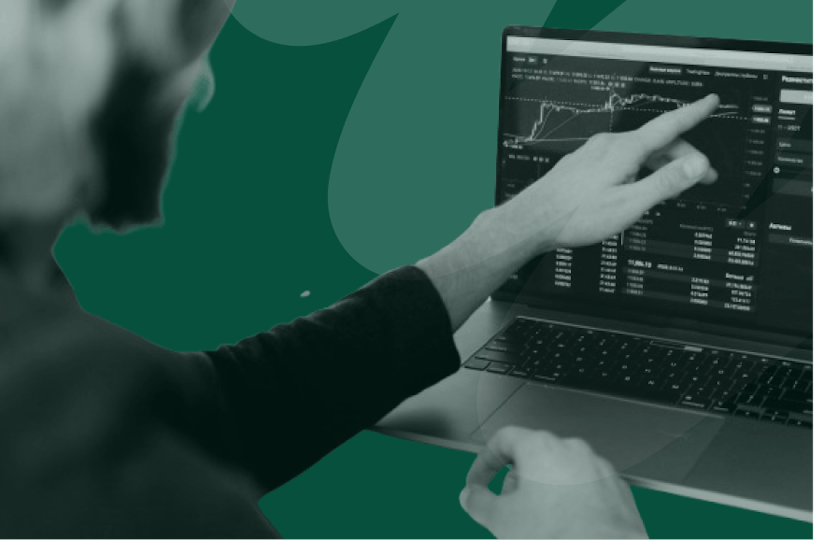
Impacts, Risks, and Opportunities (IRO) for CSRD Reporting
In this article, we’ll break down what IROs are, how to identify and assess them, and what CSRD requires in terms of disclosure.
ESG / CSR
Industries



As we strive to reduce our dependence on fossil fuels, researchers are looking towards biofuels to bridge the gap. Biofuels are renewable resources designed to complement the use of fossil fuels with the hope of eventually replacing them. Generally, biofuels are considered more environmentally friendly, as they emit lower levels of greenhouse gasses in comparison with fossil fuels. As science and practical applications increase, biofuels are poised to revolutionize how we fuel transportation, heating, and even how we generate electricity.
Demand for biofuel increased by 6% in 2022. According to the International Energy Agency, demand for biofuels will expand by 10.4 billion gallons (38 billion liters) between 2023 and 2028, with the projected demand increasing a further 23% in 2028. Biofuel research is currently a dynamic field, though scientists are still grappling with obstacles such as the cost of producing and scaling biofuels, as well as navigating land usage allocation in order to balance the need for crops destined for biofuel production as well as our dinner tables. Is biofuel the key ingredient to help global markets shift away from fossil fuels?
In this article, we’ll learn about biofuels, explore the different kinds of biofuels that are currently available, assess challenges we face in widespread adoption, and engage with how current research is poised to impact both the private and public sector.
Biofuel conjures up goofy images of cars powered by french fry grease, but the reality isn’t too far off! Biofuel is an alternative fuel derived from biomass: plant and algae matter or animal wastes. Production currently focuses on cultivating crops like corn, sugar cane, and soybeans that are then converted into biofuels. The two dominant types, ethanol and biodiesel, are made from converting organic material through processes like fermentation (for example, ethanol) or transesterification (for example, biodiesel). There is a push towards developing advanced biofuels, processed from animal waste and specific crops to avoid a clash with food production.
What is biofuel? Biofuel is an alternative fuel produced from biomass — plants, algae, or animal wastes. Considered a renewable energy source, biofuel has the potential to replace fossil fuel usage.
Biofuels are usually separated into two main categories: first generation biofuel and second generation biofuels. What’s the difference? First generation biofuels are produced from edible crops like sugarcane and vegetable oil, while second generation biofuels use non-edible organic material like agricultural and animal waste, algae, and energy crops. Another key difference is that first generation biofuels tend to have lower production costs but are difficult to scale due to competition with land used for food crops, while second generation biofuels offer higher costs, but have a greater potential for scaling production. Lastly, while first generation biofuels are widely produced, second generation biofuels remain under development with limited scope for integration at this time.
First generation biofuel uses edible material to create a renewable resource that offers a lower barrier to entry in terms of cost, but is difficult to scale due to its need for land. Second generation biofuels make use of waste and inedible organic materials, offering greater potential to scale production in the long-term.
Biodiesel - This renewable biofuel is made from animal fat, vegetable oil, or repurposed grease transformed by a process called transesterification. Its chemical similarities to diesel allow for the use of biodiesel without engine modification. Opting for biodiesel instead of fossil fuels works to reduce greenhouse gas emissions.
Ethanol - The most common type of biofuel used today, is made via the fermentation of organic material like corn, sugar cane or sugar beet. The fermentation process transmutes the sugar present in the organic material into ethanol, which is the main ingredient for bioethanol. Bioethanol is This process converts the sugars present in these materials into ethanol, which is the main component of bioethanol. Bioethanol is widely used for transportation fuel (blended with gasoline), heating, generating energy in boilers, as well as industrial use.
Renewable diesel (HVO) - This innovative biofuel is a promising alternative to diesel. While similar to biodiesel, HVO is created via hydrotreatment, which exposes organic material treated with hydrogen under high temperatures and pressures to create a hydrocarbon fuel. As the chemical compound is similar to diesel, HVO can be used without blending or modifications to your vehicle, making it an easy swap to encourage sustainability.
Biogas - Produced from the breakdown of organic materials, this biofuel is mainly methane gas. Usually used in the agricultural sector, Biogas is derived from the decomposition of organic waste. This biofuel reduces methane emissions, leaving behind a digestate material that can be repurposed as fertilizer.
Biomethane - Similar to biogas, biomethane is a sustainable gas alternative. The main difference is that biomethane is considered a purer gas as it is refined until it contains 95% methane. This high percentage allows biomethane to be combined with natural gas to power transportation vehicles or generate heat or electricity.
Biobutanol - This kind of biofuel is derived from fermenting organic material like crops, algae, or agricultural and forest waste. While less popular than ethanol, it contains an even higher energy density than ethanol and is easier to transport compared to some biofuels.
There are several types of biofuels in production, offering different modalities. The most common, biodiesel and ethanol, have the ability to be widely applicable. Derived from organic materials, these renewable resources offer a more sustainable energy source in comparison with fossil fuels.

There is a growing support for integrating biofuels. Notably, the demand for biofuels is expected to jump 11% in 2024. Dominant markets for biofuel include The United States, Brazil, Europe, and Indonesia, making up about 85% of current demand. There is global support for developing biofuel research, with growing interest in Europe. Currently, the continent is producing about 358,828 tonnes per year, with an additional 151,900 tonnes per year under construction and plans for another 1,742,760 tonnes per year, according to ETIP Bioenergy. Significantly, in June 2023, the EU ratified new changes to its Renewable Energy Directive (RED III) which obligates EU member states to include at least 14% of renewable energy in their transport uses by 2030, including a minimum of 3.5% biofuels.
There is growing support for integrating biofuel research, driven by global policy changes as nations seek to diversify energy sources.
Despite the potential to shift away from fossil fuel dependence, biofuels are not without their disadvantages. In order to raise crops for biofuel cultivation, manufacturers require large stretches of land, exacerbating existing environmental concerns like soil erosion, deforestation, and decimated biodiversity. Additionally, the need for space in order to grow biofuel crops can conflict with the amount of land and water resources needed to cultivate food crops.
Monoculture farming practices, or cultivating the same crops on the same sections of land season after season, can degrade soil quality and contribute to a lack of genetic diversity in the crops. This is especially concerning for developing nations where this conflict can drive food shortages and price hikes. Depleting local water resources and the pollution (notably elevated levels of nitrogen and phosphorus) resulting from extensive fertilizer use are also concerns.
Moreover, the process of creating biofuels is both costly and complex. Production requires significant energy output, combining water, fertilizers, and pesticide use to raise crops and transform them. In comparison to fossil fuels, biofuels tend to be more expensive. This poses a problem for consumers and also producers.
Similarly, considerable investment into infrastructure is necessary in order to integrate widespread use, making biofuels impractical to compete with fossil fuels. Affordably scaling production to meet the demand necessary to truly replace fossil fuels presents an ongoing challenge. Lastly, though biofuels are commended for their ability to reduce carbon emissions, producing this alternative fuel has the potential to increase greenhouse gas emissions due to its production and even its use.
Biofuels can contribute to soil erosion, deforestation, and food shortages, as crop cultivation competes with land used for growing food sources. Moreover, costly investments into infrastructure are necessary to make biofuel use more common. Scaling production is costly, and while biofuels can replace fossil fuels, they have the potential to release significant greenhouse gas emissions.
BioTheRos - This European project applies a multidisciplinary approach to thermochemical biofuel production. Integrating AI, BioTheRos creates predictive modeling aimed to determine global demand and create management plans for biofuel production.
Enerkem waste-to-biofuel - Converting non-recyclable waste into biofuels, Enerkem waste-to-biofuel tackles the production of ethanol. Partnering with Technip Energies in 2023, Enerkem waste-to-biofuel is poised to drive this technology forward on a global scale.
Ecofining™ technology: A collaboration between Eni and Honeywell-UOP, Ecofining processes biogenic raw material into HVO biofuels, specifically to transform organic waste like animal fat and recycled cooking oils. These biofuels can be used in vehicles to begin reducing CO2 emissions.
Hummingbird® technology - Technip Energies has created this method of converting ethanol to ethylene, which is used in the production of biofuels. This method is compelling, as it allows for a variety of bioethanol feedstocks from multiple sources. Partially supported by a grant from the US Department of Energy, Technip Energies is launching a collaboration to combine Hummingbird’s ethanol-to-ethylene technology with LanzaJet Inc.’s Alcohol-to-Jet technology to create sustainable aviation fuels.
Research is primarily focused on mapping and measuring plastics in our waterways, and integrating new generation technology into existing research methods to continue updating our understanding of our planet.
Greenly advocates tackling climate change from multiple angles for a greener tomorrow. Combining human analysis and innovative technology, Greenly creates personalized carbon accounting that is accessible to a wide range of companies no matter their size.
Request a free demo with a member of our expert team to learn more about how to get started on your journey to help fight climate change.